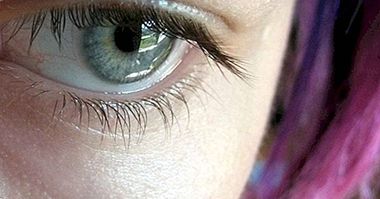The 5 stages of depression, and early warning signs
A large number of people are diagnosed each year with major depression. It is a disorder that hinders and even invalidates the normal functioning of the subject due to the high discomfort it produces, being one of the most common mental disorders and known both by professionals in psychology and by the general population.
This problem appears in different ways and due to different causes, but in general it is possible to observe a process with different phases. That is why in this article we will talk about the stages of depression .
- Related article: "Major depression: symptoms, causes and treatment"
Major depression
Major depression is one of the main disorders of mood and one of the two most common mental disorders, ranking first with anxiety disorders.
Suffer from this problem supposes experiencing a wide possible variety of symptoms among those that at least should appear sad and depressed mood and / or anhedonia or absence of pleasure before previously pleasurable activities. Other typical symptoms are sleep or feeding problems, as well as search for isolation.
Depressed people tend to adopt a passive attitude towards life, feeling helpless and hopeless. They lose the motivation and the desire to act, and over time they end up avoiding activities that were previously pleasant, since they already consider that they make sense.
Also, it occurs a deterioration in the capacity for concentration, attention and memory . In some cases aggressiveness and impulsivity also appear, being a frequent irritable state that sadness in cases of childhood depression.
Subjects with a depressive disorder manifest a series of cognitive biases that make them perceive reality in a distorted way, which leads them to maintain negative automatic thoughts towards their own person, their future and the world that are organized as schemata. dysfunctional thinking. They also tend to attribute errors to internal, stable and global factors, something that facilitates distorted depressive thinking .
The causes
This disorder has a lot of possible origins , may be due to biological factors (as in endogenous depression) or external factors.
The most usual is that in all cases there is an event or situation that triggers the appearance of feeling of helplessness and hopelessness . It can be a traumatic event, the accumulation of small stressful events or the existence of insufficient reinforcement.
Stages or phases of depressive disorder
Although depression can have different types of courses and the specific symptomatology can vary from person to person, it is considered that who suffers it goes through a series of phases until it is fully developed . They are the following:
1. Triggering event
Although there are factors of vulnerability such as genetic inheritance or sensitivity to damage that are important when triggering a depressive disorder, it usually comes hand in hand with the experience of a negative event, which will end up unleashing the first problems.
The triggering event causes them to start being born in the subject feelings of vulnerability and sadness , and even helplessness and hopelessness if the aversive situation continues over time.
If these sensations are maintained without the subject is or believes capable of overcoming them, a depression can be established.
2. Activation of cognitive distortions
The triggering event causes the person to activate a series of cognitive schemes, that is, the way in which their ideas and beliefs about the world and about themselves are related.
This, in turn, makes the interpretation of what happens to him change, generating cognitive distortions that make the world see as hostile and itself as something helpless, incapable and desperate. This is the stage of the depression in which they begin to change many of the beliefs on which life itself is based .
3. Appearance of symptoms
From the distorted processing of information, the person begins to manifest the typical symptomatology , with a low level of positive affect and a high negative affect, being some of them the sad mood and the diminution of the capacity to feel pleasure, mental and physical slowness and search of isolation.
4. Vital inhibition
The appearance of apathy, anhedonia and abulia (respectively lack of energy and motivation, pleasure and desire or willingness to act) typical of depressive disorders causes the depressive individual Finish moving away from activities that you used to like , such as hobbies and other passions, actively isolating themselves and / or decreasing their productivity, effectiveness and commitment.
5. Emergence of maintenance problems of depression
The set of symptoms of a depressive person tends to cause, over time, the appearance of new events or aspects that can worsen or maintain symptoms in the mind .
For example, although at first the depressed person tends to awaken the sympathies of their immediate environment, over time the situation of the affected and sometimes their desire for solitude ends up being aversive, producing a distance of the individual from their environment. This induces the perception of lack of support, which accentuates the existing problem and the feeling of vulnerability, helplessness and despair.
And then? Possible treatments
These stages or phases of depression usually occur frequently in almost all cases. Subsequently, the individual may resort to psychological and / or pharmacological therapy in order to treat your problem.
Based on the response to treatment, it will be possible to enter a phase of partial or total remission of symptoms and even to reach complete recovery.
However, we must bear in mind that occasionally we find depressions of recurrent course, in which several depressive episodes occur over time with seasons with partial or total remissions. In these cases In addition to the previous stages we can also talk about relapse , which must also be attended.
- Related article: "Cognitive Behavioral Therapy: what is it and on what principles is it based?"
Bibliographic references:
- American Psychiatric Association. (2013). Diagnostic and Statistical Manual of Mental Disorders. Fifth edition. DSM-V. Masson, Barcelona.
- Belloch, A .; Sandín, and Ramos (2008). Manual of psychopathology. Madrid. McGraw-Hill (vol 1 and 2). Revised edition.
- Santos, J.L. ; García, L.I. ; Calderón, M.A. ; Sanz, L.J .; de los Ríos, P .; Left, S .; Román, P .; Hernangómez, L .; Navas, E .; Thief, A and Álvarez-Cienfuegos, L. (2012). Clinical psychology. CEDE Preparation Manual PIR, 02. CEDE. Madrid.



















